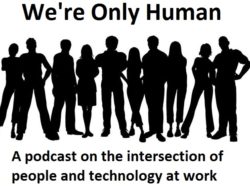This year I’ve watched with some interest the saga of Tesla, which is run by Elon Musk. He’s a genius with technology but seemingly less so with human relationships. Musk is known for making bold claims about technology and innovation, but Tesla has faced some struggles to meet production deadlines and more. This is from a few months back but the story and question are still relevant:
You can probably argue over whether it's a good or a bad sign, but Tesla CEO Elon Musk confirmed on Twitter today a report in The Information that he has taken over direct control of the division that's producing Tesla's Model 3 electric sedan after the company failed to meet the delivery goals it set.
Specifically, Tesla had intended to produce 500 Model 3 cars per day, or 2,500 per week, by the end of last month. But according to a company-wide email to employees that was sent today and obtained by Jalopnik, Musk said Tesla has been making closer to 2,000 of the cars per week. (Musk estimated last July that Tesla would be making 20,000 of the cars per month by December.)
In his email — fired off at 3 a.m. PDT — Musk added that if “things go as planned today, we will comfortably exceed that number over a seven day period!â€
Musk may have been referring in part to the reorganization. But while The Information reported that Musk had seemingly “pushed aside the company's senior vice president of engineering, Doug Field, who had been overseeing manufacturing in recent months,†Musk quickly took issue with that characterization of events.




 If you know me, you know I’m not a sports person. I don’t watch. I don’t follow.
If you know me, you know I’m not a sports person. I don’t watch. I don’t follow. In today’s
In today’s  In the latest episode of We’re Only Human, I explore talent mobility and its applications in the workplace. Talent mobility is the practice of using internal talent to fill temporary or permanent roles.
In the latest episode of We’re Only Human, I explore talent mobility and its applications in the workplace. Talent mobility is the practice of using internal talent to fill temporary or permanent roles. Last week I had the chance to see Dr. Ben Carson speak at an event. For clarity, this was a faith-based event, not a political one. I have seen the movie
Last week I had the chance to see Dr. Ben Carson speak at an event. For clarity, this was a faith-based event, not a political one. I have seen the movie